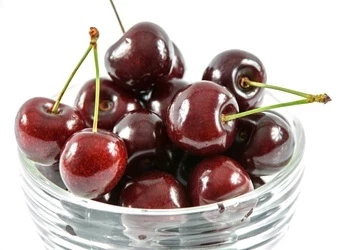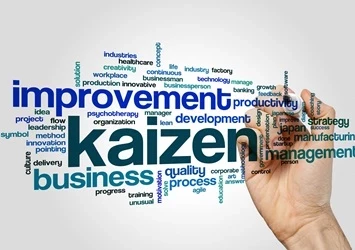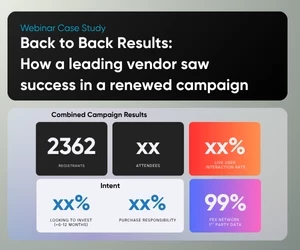Feeding the world with discipline: What Latin America teaches us about process excellence under constraint
How coordination under constraint delivers speed and consistency
Add bookmark
While global supply chains close their year, Chile accelerates. Each December, its orchards, packhouses, and logistics planners compress months of preparation into a few decisive weeks.
The cherry season begins, anticipating Chinese New Year, one of the world’s most time-critical operations, where every container, vessel slot, and temperature reading carries value. This is a study in process excellence (and coordination) under constraint.
Join the PEX Network community

Don't miss any news, updates or insider tips from PEX Network by getting them delivered to your inbox. Sign up to our newsletter and join our community of experts.
Learn MoreFrom abundance to precision
Latin America supplies more than a quarter of global fruit exports and remains the world’s largest net food-exporting region, according to the OECD-FAO Agricultural Outlook 2024–2033. Together, its leading crops generate tens of billions of dollars annually, powered by systems that turn natural abundance into structured reliability.
Three design levers sustain that consistency:
- Synchrony: Aligning biological, logistical, and commercial calendars.
- Standards: Embedding measurable quality into every routine.
- Scaling through networks: Coordinating thousands of producers through shared governance.
These levers emerged through continuous adaptation to climate, distance, and infrastructure challenges across the region. The objective is simple: anticipate variability and maintain flow.
Chile’s cherries: A national choreography
Chile leads the world in cherry exports. The USDA FAS Stone Fruit Annual (Aug 2025) estimates ≈670,000 metric tons of cherry exports in Marketing Year 2024/25 (about +7 percent versus prior year), driven largely by Chinese demand; MY 2023/24 closed near 414,000 MT.
While key factors such as weather, infrastructure, and global demand remain beyond anyone’s control, preparation begins months before harvest. Exporters such as Copefrut and San Clemente (GLOBALG.A.P. certified in their public reports) align growers, packing capacity, container allocation, and shipping schedules through ports like San Antonio and Valparaíso.
Their operating model relies on structured planning and continuous coordination – forecasts, packing-line throughput, and cold-chain performance connected in one flow. Every 24-hour delay affects freshness and value, turning timing into a shared responsibility. Discipline acts as the stabilizer amid uncertainty.
Join us at All Access: OPEX Operational Excellence 2025!
Clarity that scales
The same rigor defines several of the region’s flagship exports. The signals below are drawn from USDA FAS and national/industry data:
- Peru/blueberries: FAS Lima (June 2025) estimates exports at ~320,000 MT in MY 2024/25 after weather-related dips in 2023/24, underscoring a rapid recovery built on highly coordinated harvest and packing operations.
- Ecuador/bananas: Industry association AEBE reports 346.16 million 40-lb boxes exported in 2024 (+1.42% YoY), reinforcing Ecuador’s position among the world’s leading suppliers and highlighting the role of traceability and certification ecosystems.
- Mexico/avocados: USDA FAS (Apr 2025) projects 2.75 MMT production and 1.34 MMT exports in 2025, with about 80 percent destined for the US market, an operating model centered on forecast-driven planning around predictable demand peaks.
Different crops that follow the same logic: clear systems allow diverse actors to perform as one.
Shared data, shared accountability
Visibility has become a common operating language. Dashboards display harvest progress, temperature integrity, and cut-offs across actors that once worked independently. Certification frameworks such as GLOBALG.A.P. and BRCGS translate metrics into a shared grammar of quality. The management culture continues to shift toward transparency: when data is open, accountability becomes collective and improvements move faster.
Lessons from the sea
From the logistics side, the cherry season mirrors what defines performance at global scale: consistent rhythm sustained by clear routines and communication. Hundreds of refrigerated containers move each day, each requiring temperature stability, accurate documentation, and synchronized handling across ports and partners.
Refrigerated logistics illustrate this balance well. It is among the most technology-enabled cargo types, yet process maturity varies widely across locations. Coordination among exporters, terminals, and carriers often depends on local experience and collaboration. That variability has encouraged agricultural exporters to strengthen governance, visibility, and escalation systems that maintain quality across complex networks. In this environment, disciplined cooperation becomes a competitive advantage. Well-structured systems make technology meaningful, and shared alignment keeps them resilient.
A model built on constraint
Latin America’s agricultural success developed through adaptation to distance, weather, and infrastructure limitations. Those constraints encouraged operating systems where planning and execution converge seamlessly.
Today, these systems move large and growing export values every year, with reliability comparable to advanced manufacturing supply chains. The result is a repeatable model for any sector facing volatility: coordination under constraint delivers speed and consistency.
Professional Process Excellence Certification Provided by Inixia in Partnership with PEX Network

Designed for today’s fast-paced, competitive business landscape, this certification signals a deep capability in operational excellence and innovation. It enables professionals to lead process transformation across functions and industries, and become change agents within their organizations. Whether you're advancing your career or strengthening your team’s performance, the Certified Master of Dynamic Process Transformation provides a forward-thinking, results-driven approach to creating sustainable value and long-term success.
Learn More
























